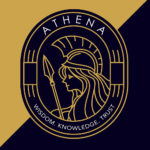 Ask Athena is Science Editor’s advice column for your most challenging publishing and editing questions. Submit your questions to scienceeditor@councilscienceeditors.org.
Ask Athena is Science Editor’s advice column for your most challenging publishing and editing questions. Submit your questions to scienceeditor@councilscienceeditors.org.
This Ask Athena column discusses plain language summaries and plain language summary publications. CSE is hosting a webinar on the topic (“Plain Language Summaries: What Are They and Why Should We Use Them?”) on May 23, 2024, at 1100 hours EDT (register at https://www.councilscienceeditors.org/upcoming-webinars).
Dear Athena,
Our publisher’s permissions office recently received a request from an author to publish a plain language summary of their article that we had published. This publication would appear in another journal.
The article we published is copyrighted by our society publisher, so we are uncomfortable having this published in another journal. The author cited that plain language summaries of publications are beneficial to the public, and they would ensure the original publication was cited. Is there any guidance in this area? Plain language summaries of publications are new to us.
—Plain Jane
Dear Plain Jane,
Your question is a good one. Journals have been publishing plain language summaries for years, and principles on developing them are available, but we can understand that having this publication in another journal may seem like a new idea.
Plain language summaries (or PLS) are summaries of articles written in easy-to-understand, nontechnical language. They are typically short and may accompany the article at the time of publication, and some may include graphical summaries for visual learning. Other plain language summaries are standalone, peer-reviewed articles that may be published alongside or after publication of the original article. These are sometimes called plain language summaries of publications (or PLSP).
According to the International Committee of Medical Journal Editors,1 a plain language summary would be an acceptable secondary publication, as long as the following criteria are met:
- The authors have received approval from the editors of both journals (the editor concerned with secondary publication must have access to the primary version).
- The priority of the primary publication is respected by a publication timeline negotiated by both editors with the authors.
- The paper for secondary publication is intended for a different group of readers; an abbreviated version could be sufficient.
- The secondary version faithfully reflects the authors, data, and interpretations of the primary version.
- The secondary version informs readers, peers, and documenting agencies that the paper has been published in whole or in part elsewhere, and the secondary version cites the primary reference.
- The title of the secondary publication should indicate that it is a secondary publication (complete or abridged republication or translation) of a primary publication.
CSE’s Scientific Style and Format’s section on redundant publication2 also describes when this publication may be justifiable:
Significant findings published in the journal of one specialty or profession warrant republication in the journal of another specialty or profession to reach an audience that otherwise might not readily have access to the findings; here, too, the journal editors and publishers of both publications should be informed of, and agree to, the redundancy.
Plain language summaries can indeed be beneficial to a general audience. They are accessible to the public and link back to the original article. They promote dissemination of the information from your (obviously) important article to a wider audience than your journal may typically have, which may pull more readers back to your journal. For more discussion on PLS, Emilie Gunn’s recent Science Editor article on the topic3 may be of interest.
In the end, the decision to approve secondary publication is up to the publishers in collaboration with the authors of the original article. Publishers should also clearly outline if or when such secondary publication is acceptable in their policies.
Always,
Athena
References and Links
- https://www.icmje.org/icmje-recommendations.pdf
- Redundant publication. In: Scientific style and format: the CSE manual for authors, editors, and publishers. 8th ed. University of Chicago Press; 2014:16.
- Gunn E. Give it to me straight: plain language summaries and their role in scholarly journals. Sci Ed. 2024;47:12–13. https://doi.org/10.36591/SE-4701-09.
At Ask Athena, we recognize that there are often a variety of opinions and options when faced with sticky situations, especially those that do not have an obvious answer. We do our best to provide sound guidance, but appreciate that others may have a different view. In the spirit of open communication, we would love to hear your thoughts and answers on the questions we cover in the column. Email us at scienceeditor@councilscienceeditors.org.
Answers to Ask Athena questions are a group effort by members of the CSE Education Committee.
